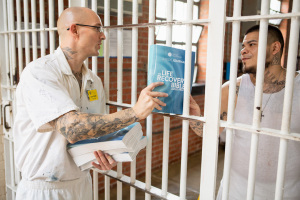Affirmative Action: Can It Make Life Fair?
As an African American who has a Master's degree from Harvard Business School, I have had the privilege of studying with the elite of the elite. My education came as a result of values ground into me by my parents. They realized that education could transform a life and prioritized the quality of my education through high school and beyond. Their (and now my) value system projected me on a path toward possibilities and success. Nothing can substitute for a family-driven set of values. It can't be legislated or superimposed on any culture – even with the best of intent.
Consider, for example, Affirmative Action in America. What is its future? Recently, in Schuette v. Coalition to Defend Affirmative Action, the Supreme Court affirmed (6-2) the right of Michigan residents to prevent their public colleges from taking race, gender, ethnicity or national origin into account in the admissions process. Michigan joins Arizona, California, Nebraska, New Hampshire, Oklahoma, Washington and Florida, which have similar policies for their state schools.
The case was prompted by the University of Michigan's 1995 rejection of Jennifer Gratz, a white student with a 3.8 GPA and a 25 on the ACT. Although her credentials were certainly not strong enough to guarantee her admission to U-M, Gratz sued over her rejection in 1997, asserting that students with lower grades and test scores were admitted because of their race. She alleged that U-M's admissions policy-which at the time gave "underrepresented" minorities an extra 20 points toward the 100 points needed to assure admission-was unfair. Her story became the force behind the 2006 ballot initiative banning racial preferences, approved by voters and upheld by the Supreme Court last month.
The Michigan ban on Affirmative Action has already spawned backlash. Brooke Kimbrough, a black student from Detroit with a 3.6 GPA and a 23 ACT score, protested her rejection from U-M. Kimbrough held a press conference and rally at the U-M campus, along with fellow students Daisha Martin, Mario Martinez, Alfredo Aguirre and the group By Any Means Necessary (BAMN).
Unlike Gratz nearly two decades ago, Kimbrough did not accuse U-M of admitting students with inferior academic credentials; the average U-M freshman last year had 3.85 GPA and between 29 and 33 on the ACT. Instead, she accused U-M of not being diverse enough:
"I believe that I have been rejected because of the morals that I stand for!...I will make it my civic duty to document every noose of a rejection letter that the university produces to our black, brown and red bodies!"
Leaving aside the comparison of a rejection letter with lynching, Kimbrough is correct that U-M's black population (just under five percent) does not match the state's 14 percent black population. However, the state of Michigan is also 79 percent white, while U-M is only 57 percent white. No one, including Kimbrough, is asserting that the university is discriminating against whites or that U-M's white population should represent the population of the state.
In reality, getting into top schools like U-M is getting tougher for everyone, regardless of skin color. Stanford University's acceptance rate for the class of 2018 was just 5.7 percent, a new low. As David Leonhardt reported recently in the New York Times, increasing competition from the best and brightest international students is making it tougher for even the top American students to gain admittance to elite universities. No mediocre student, even one who works very hard and has overcome obstacles like Kimbrough, should expect to be handed a ticket to a top tier school.
The purpose of college admissions policies should be to determine whether or not a student can be successful at the institution. As I have written in past, many students admitted to elite schools under lower academic standards end up dropping out, transferring or ranking toward the bottom of their class. Admissions policies that enroll students only to watch them fail out of school, struggle academically or switch to less rigorous majors (with poorer job prospects) do them no favors.
Ironically, while many believe race-based admissions policies hurt whites (thus the term "reverse discrimination"), there is far greater evidence that such policies hurt Asians. In their 2009 book, No Longer Separate, Not Yet Equal, Thomas Espenshade and Alexandria Radford demonstrate that Asians must score an average of 140 points higher than whites on the SAT to be admitted to competitive universities. This is not a new problem; between the 1920's and 1950's, many elite colleges, including Harvard, adjusted admissions policies to restrict the number of Jewish students.
The good news is you do not have to attend an elite university to find success in life. As Leonhardt explained, "There is still scant evidence that the selectivity of the college one attends matters much. Students with similar SAT scores who attended colleges of different selectivity - say, Penn and Penn State - had statistically identical incomes in later years, according to research the economists Stacy Dale and Alan Krueger."
Jennifer Gratz is successful, despite her rejection from U-M, and I expect Brooke Kimbrough will be also. Gratz graduated from University of Michigan-Dearborn, and Kimbrough has been accepted to Michigan State, Howard, Iowa and Western Michigan. While life may never be "fair" in the way either of these women envision it, we can work to make sure that more young people are able to enter adulthood with a backup plan of attending a good college instead of a great one.




























